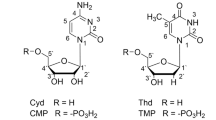Abstract
Pseudomonas aeruginosa phosphorylcholine phosphatase (PchP) catalyzes the hydrolysis of phosphorylcholine, which is produced by the action of hemolytic phospholipase C on phosphatidylcholine or sphyngomielin, to generate choline and inorganic phosphate. Among divalent cations, its activity is dependent on Mg2+ or Zn2+. Mg2+ produced identical activation at pH 5.0 and 7.4, but Zn2+ was an activator at pH 5.0 and became an inhibitor at pH 7.4. At this higher pH, very low concentrations of Zn2+ inhibited enzymatic activity even in the presence of saturating Mg2+ concentrations. Considering experimental and theoretical physicochemical calculations performed by different authors, we conclude that at pH 5.0, Mg2+ and Zn2+ are hexacoordinated in an octahedral arrangement in the PchP active site. At pH 7.4, Mg2+ conserves the octahedral coordination maintaining enzymatic activity. The inhibition produced by Zn2+ at 7.4 is interpreted as a change from octahedral to tetrahedral coordination geometry which is produced by hydrolysis of the \( \left[ {{\text{Zn}}^{ 2+ } {\text{L}}_{ 2}^{ - 1} {\text{L}}_{ 2}^{0} \left( {{\text{H}}_{ 2} {\text{O}}} \right)_{ 2} } \right] \) complex.




Similar content being viewed by others
References
Baykov AA, Evtushenko OA, Avaeva SM (1988) A malachite green procedure for orthophosphate determination and its use in alkaline phosphatase-based enzyme immunoassay. Anal Biochem 171:266–270. doi:10.1016/0003-2697(88)90484-8
Beassoni PR, Otero LH, Massimelli MJ, Lisa AT, Domenech CE (2006) Critical active-site residues identified by site-directed mutagenesis in Pseudomonas aeruginosa phosphorylcholine phosphatase, a new member of the haloacid dehalogenases hydrolase superfamily. Curr Microbiol 53:534–539. doi:10.1007/s00284-006-0365-2
Beassoni PR, Otero LH, Lisa AT, Domenech CE (2008) Using a molecular model and kinetic experiments in the presence of divalent cations to study the active site and catalysis of Pseudomonas aeruginosa phosphorylcholine phosphatase. Biochim Biophys Acta 1784:2038–2044. doi:10.1016/j.bbapap.2008.08.014
Bochatay L, Pearson P (2000) Metal ion coordination at the water-Manganite (-MnOOH) interface. II. An EXAFS study of Zn(II). J Colloid Interface Sci 229:593–599. doi:10.1006/jcis.2000.7014
Domenech CE, Lisa AT, Salvano MA, Garrido MN (1992) Pseudomonas aeruginosa acid phosphatase. Activation by divalent cations and inhibition by aluminiun ion. FEBS Lett 1:96–98. doi:10.1016/0014-5793(92)80108-S
Dudev T, Lim C (2000) Metal binding in proteins: the effect of the dielectric medium. J Phys Chem B 104:3692–3694. doi:10.1021/jp9941559
Dudev T, Lim C (2001) Metal selectivity in metalloproteins: Zn2+ vs Mg2+. J Phys Chem B 105:4446–4452. doi:10.1021/jp004602g
Dudev T, Lim C (2003) Principles governing Mg, Ca, and Zn binding and selectivity in proteins. Chem Rev 103:773–787. doi:10.1021/cr020467n
Gasteiger E, Hoogland C, Gattiker A, Duvaud S, Wilkins MR, Appel RD, Bairoch A (2005) Protein identification and analysis tools on the ExPASy server. In: Walker JM (ed) The proteomics protocols handbook. Humana Press Inc, Totowa, pp 571–607. doi:10.1385/1592598900
Harding MM (2000) The geometry of metal-ligand interactions relevant to proteins. II. Angles at the metal atom, additional weak metal-donor interactions. Acta Cryst D56:857–867. doi:10.1107/S0907444900005849
Harding MM (2001) Geometry of metal-ligand interactions in proteins. Acta Cryst D57:401–411. doi:10.1107/S0907444900019168
Katz AK, Glusker JP, Markham GD, Bock CW (1998) Deprotonation of water in the presence of carboxylate and magnesium ions. J Phys Chem B 102:6342–6350. doi:10.1021/jp9815412
Kluge S, Weston J (2005) Can a hydroxide ligand trigger a change in the coordination number of magnesium ions in biological systems? Biochemistry 44:4877–4885. doi:10.1021/bi047454j
Kuzmic P (1996) Program DYNAFIT for the analysis of enzyme kinetic data: application to HIV proteinase. Anal Biochem 237:260–273. doi:10.1006/abio.1996.0238
Li X, Pan G, Qin Y, Hu T, Wu Z, Xie Y (2004) EXAFS studies on adsorption-desorption reversibility at manganese oxide-water interfaces. II. Reversible adsorption of zinc on δ-MnO2. J Colloid Interface Sci 271:35–40. doi:10.1016/j.jcis.2003.11.029
Lightstone FC, Schwegler E, Hood RQ, Gygi F, Galli G (2001) A first principles molecular dynamics simulation of the hydrated magnesium ion. Chem Phys Lett 343:549–555. doi:10.1016/S0009-2614(01)00735-7
Lisa AT, Lucchesi GI, Domenech CE (1994) Pathogenicity of Pseudomonas aeruginosa and its relationship to the choline metabolism through the action of cholinesterase, acid phosphatase, and phospholipase C. Curr Microbiol 29:193–199. doi:10.1007/BF01570153
Lisa AT, Beassoni PR, Masssimelli MJ, Otero LH, Domenech CE (2007) A glance on Pseudomonas aeruginosa phosphorylcholine phosphatase, an enzyme whose synthesis depends on the presence of choline in its environment. In: Méndez-Vilas A (ed) Communicating current research and educational topics and trends in applied microbiology. Badajoz, Spain, pp 255–262
Massimelli MJ, Beassoni PR, Forrellad MA, Barra JL, Garrido MN, Domenech CE, Lisa AT (2005) Identification, cloning, and expression of Pseudomonas aeruginosa phosphorylcholine phosphatase gene. Curr Microbiol 50:251–256. doi:10.1007/s00284-004-4499.9
Parr RG, Pearson RG (1983) Absolute hardness: companion parameter to absolute electronegativity. J Am Chem Soc 105:7512–7516. doi:10.1021/ja00364a005
Pavlov M, Siegbahn PEM, Sandström M (1998) Hydration of beryllium, magnesium, calcium, and zinc ions using density functional theory. J Phys Chem A 102:219–228. doi:10.1021/jp972072r
Sali A, Blundell TL (1993) Comparative protein modeling by satisfaction of spatial restraints. J Mol Biol 234:779–815. doi:10.1006/jmbi.1993.1626
Salvano MA, Domenech CE (1999) Kinetic properties of purified Pseudomonas aeruginosa phosphorylcholine phosphatase indicated that this enzyme may be utilized by the bacteria to colonize in different environments. Curr Microbiol 39:1–8. doi:10.1007/PL00006819
Tanaka K, Osaki A (1967) Acidity and catalytic activity of metal ions. Bull Chem Soc Jpn 40:1728–1730. doi:10.1246/bcsj.40.1728
Wang W, Kim R, Jancarik J, Yokota H, Kim S (2001) Crystal structure of phosphoserine phosphatase from Methanococcus jannaschii, a hyperthermophile, at 1.8 Å resolution. Structure 9:65–71. doi:10.1016/S0969-2126(00)00558-X
Zhu M, Pan G (2005) Quantum chemical studies of mononuclear Zinc species of hydration and hydrolysis. J Phys Chem 109:7648–7652. doi:10.1021/jp045560p
Acknowledgments
CED and ATL are Career Members of the Consejo Nacional de Investigaciones Científicas y Técnicas (CONICET). PRB would like to acknowledge fellowship support from CONICET and LHO from MinCyT-Cba. This work was supported by grants from CONICET, Agencia Nacional de Investigaciones Científicas (FONCYT), ANPCYT-UNRC, and SECYT-UNRC of Argentina.
Author information
Authors and Affiliations
Corresponding author
Rights and permissions
About this article
Cite this article
Otero, L.H., Beassoni, P.R., Lisa, A.T. et al. Transition from octahedral to tetrahedral geometry causes the activation or inhibition by Zn2+ of Pseudomonas aeruginosa phosphorylcholine phosphatase. Biometals 23, 307–314 (2010). https://doi.org/10.1007/s10534-010-9289-1
Received:
Accepted:
Published:
Issue Date:
DOI: https://doi.org/10.1007/s10534-010-9289-1




